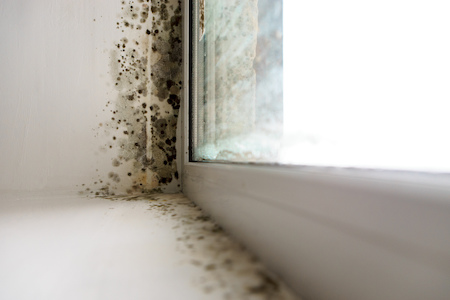What Is Biological Growth And How It Affects You At Home
We talk about biological growth quite frequently here on our site. But what is biological growth? And more importantly, why should you pay attention to it?
Biological growth includes many different types of pollutants and contaminants that may exist in your home. They include things like bacteria, viruses, dust, mites, pollen, animal dander, and pests.
These pollutants and contaminants come from a variety of different sources, many of which are out of your control. By controlling the humidity levels inside your home, you can reduce or eliminate the growth of some of these contaminants. Guidelines suggest 30 to 50 percent humidity level is a safe, comfortable home environment. Too much water or moisture can introduce a breeding ground for all kinds of problems.
How does this happen?
How pollutants get into your home
Sources for pollutants are everywhere; you can’t avoid them. Pollen can come in on your clothes, shoes, pets, or even as you open and close windows and doors. Viruses are transmitted through people and animals. Bacteria come in on virtually everything that comes through the door. And if you have an HVAC system that has a problem, it can be a breeding ground for bigger challenges.
Biological growth is produced by living things. That means you’ll find it on potentially everything inside your home. It can hide in carpet, drapery, furniture, or other areas where dust accumulates. It can exist in damp areas, including your bathrooms, basement, crawlspace, humidifiers, cooling coils, or vents that don’t work the way they should.
How biological growth impacts your health
Depending on the levels of biological growth inside your home, it can trigger different reactions, including allergy and asthma. Infectious illnesses like influenza can be spread through the air supply. Mildew and molds can release toxins in the air. Symptoms include things like:
- Sneezing
- Coughing
- Watery or itchy eyes
- Dizziness
- Shortness of breath
- Fever
- Lethargy
Just to name a few.
While reaction might not show up right away, or be noticeable at the same levels in every person who occupies the premises, it can be harmful just the same. We also see newly diagnosed diseases associated with inside air. Sick building syndrome impacts millions. Humidifier fever is only one form of sick building syndrome in which toxins from microorganisms build quickly within the ventilation system of a large office or building.
Reducing biological growth
The best way to keep biological growth at bay is to ensure your heating and cooling systems are maintained regularly. Be sure you have an adequate ventilation system throughout your building. And when you notice a problem, ensure quick reaction to keep issues at a minimum.
Install and use fans – It’s especially important in the kitchen and bathroom areas where all kinds of moisture and pollutants exist.
Ventilate attics and crawlspaces – this helps prevent moisture buildup and keeps humidity levels where they should be.
Water damage – watch for water problems and clean them quickly when they occur. Even a small spill left to set for a long period of time can cause extensive damage. Clean thoroughly, when discovered, to avoid future problems.
Take steps to avoid biological contaminants – clean and disinfect regularly. This includes every room in your home or commercial location, including basements.





